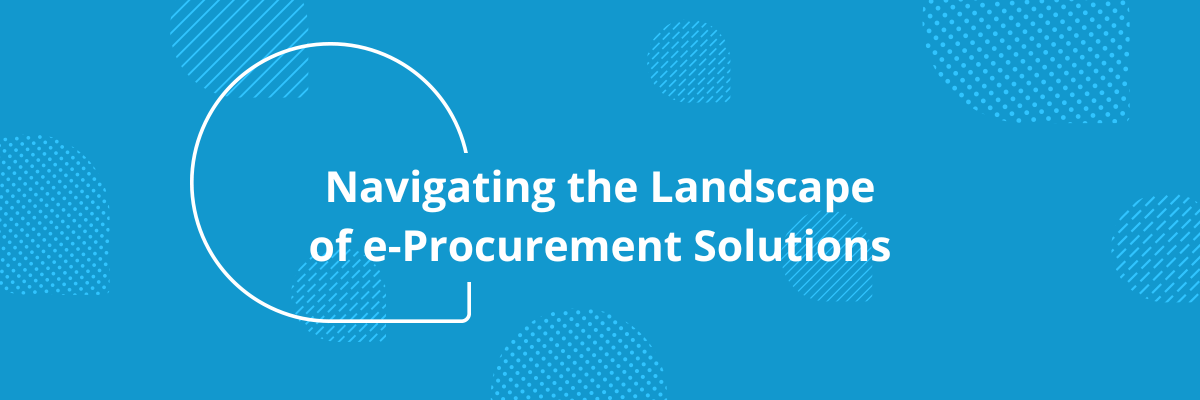In the rapidly evolving business world, e-Procurement stands at the core as a necessity rather than a luxury. Implementing or upgrading an e-Procurement foundation requires careful navigation through a sea of options. Recognizing e-Procurement as the definitive starting point is crucial; it is the key to data collection, and essential for deriving value from any module. Regardless of vendor arguments that may suggest otherwise, the challenge lies in selecting the right solution, and this guide aims to steer you through the complexities of e-Procurement solutions.
Establishing a Minimal Baseline
A baseline requirement helps eliminate solutions lacking core functionality. This is true for small, medium, and large organizations as well. However, it doesn’t aid in identifying potential vendors or in selecting among those that meet current baseline needs.
The Role of RFP
A Request for Proposal (RFP) is an indispensable tool. Targeting a top 3–5 list, rather than a broad spectrum of vendors, ensures a focused search. The challenge, though, lies in compiling that list. Here are a few tools that can aid your search for the best e-Procurement solution.
Tools for Different Company Sizes
Large Companies: Spend Matters Solution Map
For large corporations, especially multi-nationals, the Solution Map by Spend Matters offers a comprehensive enough approach. This tool verifies technical capabilities of various solutions and allows organizations to weigh them down to the specific capability level. It takes into consideration the technical foundations and differentiates between 'must-haves' and 'should-haves'. However, it may not capture every vendor, though it does include most of those serving large multi-national companies.
Mid-Size Companies: Spend Matters TechMatch
Larger mid-size companies may find TechMatch by Spend Matters to be an effective starting point. This tool is based on the Solution Map and allows organizations to rank vendors by answering questions that encapsulate related functional requirements. It enables a more personalized approach to vendor selection, factoring in the unique needs and specifications of the organization. Like the Solution Map, it doesn’t capture every vendor but includes more than enough for a mid-size, primarily regional organization.
Small Companies: TechMatch or Alternative Approaches
For small companies, budgets and specific needs play a vital role. While TechMatch could still work, it may not always be feasible due to budget constraints or the focus on smaller, lower-cost solutions. These organizations might need to look for newer solutions that fit their particular constraints and ambitions. The reality is that smaller companies might not be able to afford the suites covered by tools like TechMatch, and they may need to look into alternative strategies tailored to their specific situation.
The Bigger Picture
The difficulty in finding the right vendor goes beyond creating a shortlist for an RFP. The challenge extends to understanding the business functions and technical foundations that truly support your organization's needs. The status quo in vendor selection is problematic. It's benefiting some, while hindering others, leading to a confusing and challenging situation for those seeking the right solution.
Conclusion
The choice of tools for navigating the e-Procurement landscape must align with the size, needs, and capabilities of the organization. Larger corporations may benefit from robust guides like Spend Matters Solution Map, while mid-size companies could leverage TechMatch. Small companies may need to explore individual alternatives that cater specifically to their needs and budget. Ultimately, the goal is to find a tool or method that offers a personalized, relevant, and efficient approach to selecting the e-Procurement solution that will serve the company best.
And if you are looking for a simple solution, Fluenta could be an excellent choice. 😉
More on Source-to-Pay
Previous article: How e‑Procurement Enhances Supplier Relations
Next article: The Most Essential Business Modules

.png)
-2.jpg)

